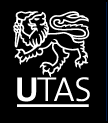Noctiluca scintillans
(Macartney) Ehrenberg 1834
Taxonomy
| Phylum | Dinoflagellata |
| Class | Noctiluciphyceae |
| Order | Noctilucales |
| Family | Noctilucaceae |
| Genus | Noctiluca |
Description
- A dinoflagellate, and in a strict sense not an animal.
Size
- Can be quite large, 0.2 - 2 mm in diameter, though typically about 0.5 mm.
Distinguishing characteristics
- Strongly buoyant, balloon-shaped cell.
- Possess oral pouch, short flagellum and tentacle.
- Cytoplasm is mostly colourless, except for the presence of minute carotenoid globules around the periphery of the cell.
- Can cause spectacular bioluminescence.
Distribution
- Temperate, subtropical and tropical waters.
- Mostly restricted to coastal waters.
- Occurs especially in the vicinity of river mouths and following heavy rainfalls.
- Can persist year round, but more abundant during the warmer seasons.
Ecology
- Heterotrophic, i.e. it ingests ready-made organic matter in its environment rather than synthesizing its own as plants do.
- Buoyancy achieved by high accumulation of lighter ions in cytoplasm. Changing ionic concentration can cause ascent or descent in the water column.
- Produces tomato-soup or pinkish coloured water when it blooms in Australian waters (image 8).
- Responsible for rare blooms in the 1980s (e.g. in Lake Macquarie, NSW, in 1982) but, starting in Sydney coastal waters in 1993, has since developed into one of the most common red-tide organisms in Australian waters, also affecting Port Phillip Bay (since 1993) and Tasmania (since 1994). It occasionally has forced closure of Sydney beaches.
- Because it blooms in very dense aggregations it attracts many predators.
- Prey for many copepods e.g. Calanus sp., Temora sp. and Acartia sp. (Lehto et al., 1998; Sulkin et al., 1998); chaetognaths and hydromedusae (Daan, 1989).
- Feeds on diatom aggregates (Tiselius & Kiorboe, 1998), preys on copepod eggs and naupliar stage larvae (Fock & Greve, 2002; Thomas, 1979; Quevedo et al., 1999), even on fish eggs, causing a considerable impact on its environment (Enomoto, 1956).
- Function of bioluminescence is unknown. Experiments have shown that copepods feed less on bioluminescent Noctiluca cells (Larink and Westheide 2006).
Additional Notes
- Toxicology: No toxic effects are known, but it is possible that the high ammonia content of the vacuole irritates fish, which generally avoid the bloom areas. Noctiluca has been known to bloom extensively off the east and west coasts of India, where it has been implicated in the decline of fisheries.

